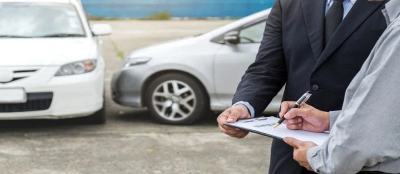Car Insurance in 2025 Car insurance has always been a critical component of vehicle ownership, ensuring financial protection in case of accidents, theft, or damage. However, as we step into 2025, the landscape of car insurance is undergoing rapid transformation. Advancements in technology, changes in driver behavior, and evolving regulatory frameworks are all contributing to a new era in auto insurance. Understanding these shifts is essential not only for staying compliant but also for maximizing savings and ensuring adequate protection. In this article, we’ll explore what’s changing in car insurance in 2025 and how drivers can best prepare for these developments.
1. Rise of Usage-Based Insurance (UBI)
One of the most significant trends gaining momentum in 2025 is Usage-Based Insurance (UBI). With telematics devices and mobile apps collecting real-time data on driving behavior, insurers can now offer personalized premiums based on actual driving habits.
What’s New?
- Insurers are expanding UBI programs beyond just “safe driving” rewards.
- They’re incorporating factors such as mileage, time of day, hard braking, and speed.
How to Prepare:
Enroll in your insurer’s telematics program if available. Drive cautiously, maintain smooth acceleration and braking, and avoid late-night drives if possible. This can significantly reduce your premium costs.
2. Electric Vehicles (EVs) and Insurance Pricing
With electric vehicles becoming mainstream, insurance models are adjusting to cover these tech-heavy cars. EVs often have higher repair costs due to specialized parts and labor, but they’re also involved in fewer severe accidents thanks to advanced safety features.
What’s New?
- Insurers are introducing EV-specific policies that account for battery replacement, software issues, and autonomous features.
- Some providers offer discounts for eco-friendly driving and vehicle efficiency.
How to Prepare:
If you own or plan to buy an EV, compare insurers that specialize in EV coverage. Make sure your policy covers unique EV aspects such as charging equipment and firmware updates.
3. Integration of AI and Big Data
Artificial Intelligence and Big Data are now at the core of underwriting and claims processing in 2025. AI is improving accuracy in risk assessment and speeding up the claims process dramatically.
What’s New?
- Instant claims approvals through AI-powered apps.
- Chatbots for 24/7 customer service and policy management.
- Predictive analytics for personalized pricing.
How to Prepare:
Leverage insurer apps to track your policy, manage claims, and get support. Keeping your driving record clean and maintaining an up-to-date profile helps insurers offer the best AI-driven rates.
4. Autonomous and Semi-Autonomous Vehicles
Semi-autonomous driving features like adaptive cruise control and lane-keeping assist are common in 2025, and fully autonomous vehicles are nearing mainstream adoption. This impacts how risk is assessed, shifting liability from drivers to manufacturers or software providers in some cases.
What’s New?
- Shared liability between drivers and vehicle software developers.
- Special insurance policies tailored for autonomous cars.
- Legal frameworks evolving to support new insurance models.
How to Prepare:
If your car has autonomous features, discuss coverage details with your provider. Ensure you understand who’s liable in case of an accident involving automated systems.
5. Climate Change and Natural Disasters
With climate-related events increasing in frequency and intensity, insurers are recalibrating premiums based on geographic risk. Floods, wildfires, and hurricanes are now more heavily weighted in premium calculations.
What’s New?
- Higher premiums in high-risk zones.
- Optional add-ons for climate-related damage.
- Real-time alerts and preventative tools integrated into insurer apps.
How to Prepare:
Review your comprehensive coverage. Consider additional protections if you live in a disaster-prone area. Installing security and safety systems may help lower premiums.
6. Subscription-Based and On-Demand Coverage
The rise of flexible lifestyles and gig economy jobs has led to increased demand for flexible insurance. Subscription-based models and on-demand policies are becoming viable options for many drivers.
What’s New?
- Pay-as-you-go policies for part-time drivers or vehicle renters.
- Monthly subscription plans that offer flexibility to pause or modify coverage.
- Microinsurance options for delivery drivers or rideshare workers.
How to Prepare:
Evaluate how often and why you drive. If you’re a low-mileage driver or only drive occasionally, switching to a pay-per-mile or subscription-based policy could save you money.
7. Enhanced Fraud Detection
Insurance fraud continues to be a significant concern, and in 2025, advanced fraud detection tools powered by AI and blockchain technology are being deployed across the industry.
What’s New?
- Real-time data validation during claims processing.
- Blockchain for secure record-keeping and claims history.
- AI flagging of suspicious patterns.
How to Prepare:
Keep accurate records and be transparent when filing claims. Avoid any practices that could be flagged as suspicious, such as exaggerated damages or delayed reporting.
8. Digital-First Insurance Platforms
Traditional insurance agents are being supplemented or even replaced by digital platforms that offer fast, customizable policy management. These platforms make it easier to compare quotes, tweak coverage, and file claims.
What’s New?
- Mobile-first insurance providers offering fully digital services.
- Instant policy adjustments via apps or websites.
- Paperless claims, renewals, and payments.
How to Prepare:
Familiarize yourself with digital insurance tools. Choose insurers with user-friendly platforms that allow for seamless management of your policy from your smartphone or desktop.
Final Thoughts: Adapting to the Future of Car Insurance
Car insurance in 2025 is no longer a static, one-size-fits-all model. It’s dynamic, data-driven, and increasingly customer-centric. Whether you’re driving an EV, a smart car, or a traditional gas vehicle, the key to saving money and staying protected is staying informed.
